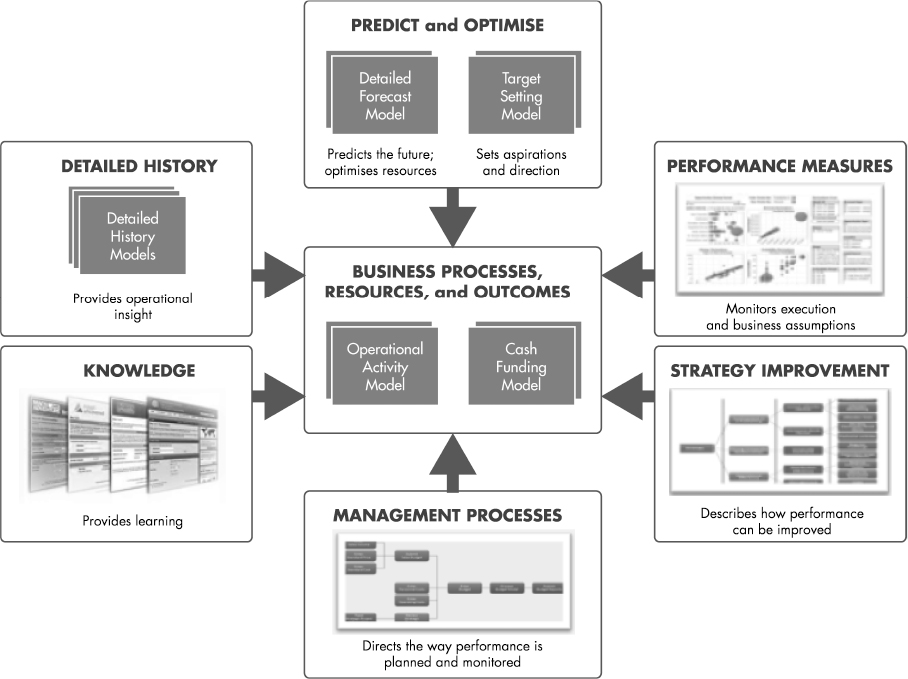4
BUSINESS PLANNING FRAMEWORK
The framework we are about to describe provides organisations with a holistic way of planning and managing performance that links resources to workload and the achievement of business objectives.
LOGICAL OVERVIEW OF THE FRAMEWORK
Back in chapter 1, ‘Planning Fundamentals’, we established that the role of planning was to achieve an organisation’s purpose by managing what can be controlled within an uncontrollable and unknowable external environment. As a direct consequence of this, the focus of the planning framework is on cross-functional business processes, resources, and outcomes and how they link to business objectives.
The framework translates the six views of business processes as shown in figure 1-1, into a set of linked planning models and components (figure 4-1).
Figure 4-1: Key Components of the Planning Framework

At the heart of the framework is the operational activity model (OAM) that describes an organisation’s business processes. This can be used to assess workload and resources required to meet objectives. The model also provides input to the cash funding model (C FM), to determine cash requirements and funding sources.
Around these two models are a series of other models and related components that provide different but linked views of performance
• Detailed history provides backup information on what actually happened
• Performance ...
Get Budgeting, Forecasting and Planning In Uncertain Times now with the O’Reilly learning platform.
O’Reilly members experience books, live events, courses curated by job role, and more from O’Reilly and nearly 200 top publishers.

